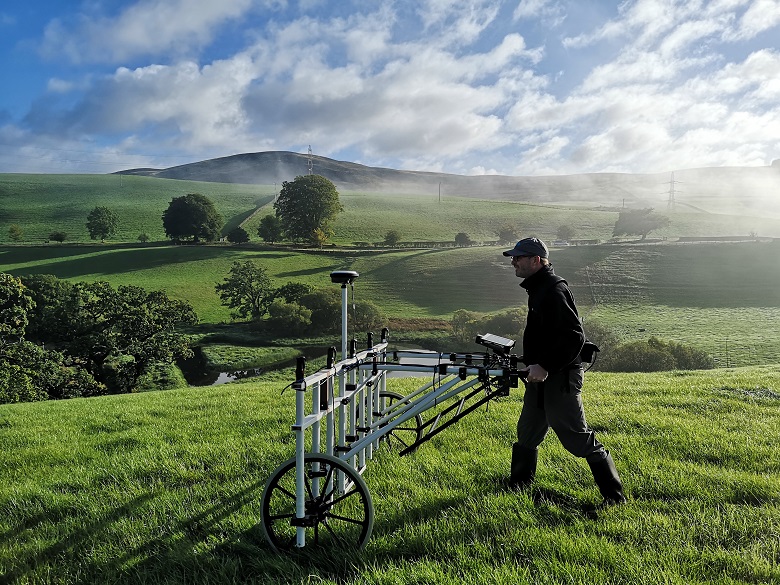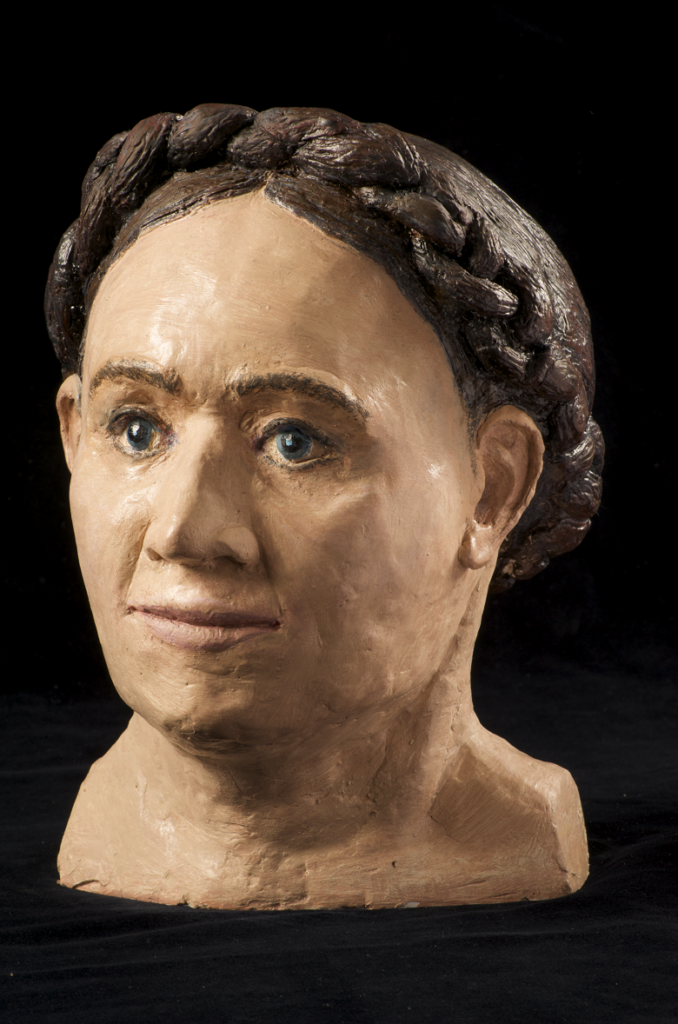Scotland’s long, rich and turbulent history contains many mysteries. Thanks to scientific advances, there are now more ways than ever to investigate Scotland’s complex history. Physical clues have been left in the world around us and science is helping to solve them.
As new technologies and analysis techniques develop, the heritage sector is employing more people with science, technology, engineering, and mathematics (STEM) skills.
From land surveying to conservation and digitising, there are plenty of roles in heritage which use science to reveal the secrets of Scotland’s past and learn more about it. Let’s take a look at six exciting discoveries unearthed by science!
New insight into the Stone of Destiny
In preparation for the Stone of Destiny’s starring role in the coronation of King Charles III, the stone was digitised and analysed using X-ray fluorescence analysis (XRF), which has provided new insight into the stone’s story.
Using digital imaging techniques, the digital documentation team at the Engine Shed created a 3D model of the Stone of Destiny which has revealed previously unnoticed markings, potentially Roman numerals, on its surface. An investigation of the 3D model has also allowed researchers to confirm that the stone was worked on by different stonemasons with different tools, as the model allows for a deeper examination of the original tooling working marks.
With the help of XRF, a technique which helps determine the chemical composition of a material, researchers have discovered traces of copper alloy on the stone’s top surface and traces of gypsum plaster. These discoveries indicate that a bronze or brass object was probably placed on the stone at some point in the past, and that a plaster cast was taken of it.
Rediscovering a lost Roman site
In the 18th century, a Scottish physician and antiquary called Robert Sibbald wrote about a Roman fortlet in West Dumbartonshire. This fortlet would have been a part of a collection of fortlets alongside the Antonine Wall. It would have been used to patrol and defend the northernmost frontier of the Roman Empire.
Sibbald noted that this fortlet was located in a field near Carleith Primary School in West Dunbartonshire. Over the next 200 years, archaeologists tried to find it many times but weren’t able to. Thankfully, science techniques have come to the rescue!

Gradiometry being used to find the fortlet foundation that has been discovered underneath and along the Antonine Wall.
The stone base for this Roman fortlet was rediscovered underground in 2023. This was possible because archaeologists used a non-invasive technique known as gradiometry. Gradiometry measures small changes in the earth’s magnetic field, and this allows archaeologists to know what is underneath the soil without excavating.
How science is making the past more colourful
Although today we experience most medieval carvings as natural stone, evidence suggests that many of these would have been brightly painted in the past.
Different types of scientific analysis has helped us learn more about the colours that would have used on these carvings. Thanks to the work of scientists we’ve even been able to recreate them in full colour!
An example of this is a lighting show at Elgin Cathedral. Edinburgh Napier University researchers created this light show in 2016. Now visitors can experience the carving like people would have seen it in the 13th century.
We think this effigy may belong to Archibald, Bishop of Moray between 1253 and 1298.
Small samples of brightly coloured paint were taken from the surface of the carved memorial. The paint traces were found and analysed using a range of techniques. These included X-ray fluorescence (XRF), and Ultraviolet light (UV) photography. But what are these techniques? XRF helps determine the chemical composition of a material, and UV photography captures images near the ultraviolet spectrum which is invisible to the human eye.
UV is often used to learn more about how paintings were painted and modified in later years. For example, using UV, we have learned that some areas of Trinity House’s ‘A View of Leith with Galleon’ were repainted.
Getting to know the Stirling Castle skeletons
Have you ever wondered what life was like at Stirling Castle hundreds of years ago? Using scientific techniques in archaeology taught us a lot about the lives and deaths of some of the medieval people buried in Stirling Castle.
In 1997, eight skeletons were found buried beneath Stirling Castle’s chapel floor. One of these was identified as female. Scientists were able to discover that she was probably alive during the First War of Independence (1296-1328). To do this, they used radiocarbon dating. This technique measures the amount of carbon present in an object with organic matter.

Re-constructed face of an unknown female whose skeleton was found during preparatory work for the refurbishment of the Palace at Stirling Castle.
Thanks to osteological analysis, the study of bones and other skeletal remains, researchers have also been able to learn a lot about her life. They have even been able to reconstruct how she might have looked!
Uncovering historic landscapes
Fancy knowing what Arran looked like thousands of years ago? Science can help with that!

Machrie Moor on the west coast of Arran would once have been a woodland.
Today we’re used to rolling hills and moors, but it used to look very different. When the first Mesolithic people arrived on Arran, the area was mostly woodland with lots of hazel. The new island inhabitants opened out the woodland with controlled burning around 7,825 years ago. During the early Neolithic period, islanders started growing cereal and raising livestock. At the beginning of the Bronze Age, farmers built roundhouses and continued farming until the 1st millennium BC. After that, cereal cultivation declined and heath and blanket bog species expanded.
We know this because in the 1980s, a PhD student investigated the history of the west of Arran using coring and pollen analysis. Coring is the removal of a column of soil using a steel rod. It allows researchers to examine sediments and undertake pollen analysis. The further down you go, the older the samples are. This shows the changes in vegetation and land use over time. Thanks to this, scientists were able to reconstruct the history of the area’s prehistoric vegetation!
How old is Castle of Old Wick?
Castle of Old Wick is a mysterious medieval site in Caithness. Over the years, the initial construction of the castle has been intensely debated. Some believed that it was first built in the 12th century and others argued that it belonged to the 14th century. To shed more light on the tower’s history, HES and the Castle Studies Trust turned to dendrochronology, the analysis and dating of tree rings.
Experts were able to carefully collect samples from timber fragments remaining in a joint socket in the castle’s upper floor. Unfortunately, this wood was alder which is not suitable for dendrochronological dating as there’s a lack of reference data. The experts had to turn to radiocarbon dating instead. Thanks to this, we now know that the wood was cut between 1515 and 1550. Dendrochronologists have concluded that it’s likely that this timber was added to the tower as part of repairs in the early 16th century. This would fit in with periods of looting that we know took place at this time. We still can’t give a definitive age for the Castle of Old Wick, but the new scientific evidence makes it more likely that it’s 14th or 15th century. The Castle Studies Trust has more in-depth information on this project on their blog.
Could your career help with the next big discovery?
The role of science in heritage continues to grow. With more STEM roles developing in the sector every day, we cannot help but wonder: what will science reveal next? Science and scientific analysis have helped learn more about the heritage of Scotland and the world! It’s an exciting time to be involved in science and heritage.
Get involved
July to September 2023 | If you’re interested in exploring how science can help us understand heritage better, why not check out Castle Science?
September 2023 | During Scottish Archaeology Month there will be plenty of opportunity to explore how science is used in heritage.
Read more
If you enjoyed this blog, you might also enjoy our blogs featuring science in the heritage sector:
- The Science of Witchcraft
- The dendrochronology of St Giles Cathedral tower
- Trowels and test-tubes: Why we study archaeological science
- A Day of Science and Digital Innovation at The Hill House
Find out about our Skills Investment Plan.

